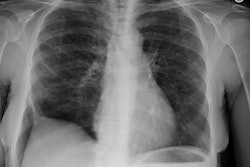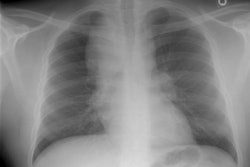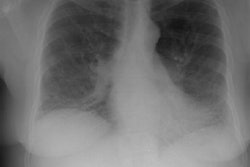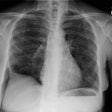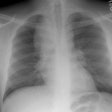Crazy-paving appearance at thin-section CT: spectrum of disease and pathologic findings.
Johkoh T, Itoh H, Muller NL, Ichikado K, Nakamura H, Ikezoe J, Akira M, Nagareda T
PURPOSE: To determine the spectrum of disease associated with a fine reticular pattern superimposed on areas of ground-glass opacity (i.e., "crazy-paving" appearance) at thin-section computed tomography (CT) and to determine the underlying pathologic features. MATERIALS AND METHODS: In the in vivo study, the cases of 46 patients (21 male, 25 female; age range, 13-82 years) were retrospectively reviewed, with special attention paid to the size and extent of the reticular network. In the in vitro study, the thin-section CT findings in 20 inflated and fixed lungs were precisely correlated with the gross appearance, contact radiograph findings, stereomicroscopic views, and histologic findings. RESULTS: In the in vivo study, 15 different diseases were identified, including alveolar proteinosis, adult respiratory distress syndrome, acute interstitial pneumonia, diffuse alveolar damage superimposed on usual interstitial pneumonia, and drug-induced pneumonitis. In the in vitro study, the fine networks at pathologic analysis were due to an alveolar filling process (n = 10), an interstitial fibrotic process (n = 7), or a combination of interstitial and intraalveolar processes (n = 3). Twelve (60%) cases did not have thickening of the interlobular septa within the areas of the crazy-paving appearance. CONCLUSION: The crazy-paving appearance is a nonspecific finding seen in a variety of interstitial and airspace lung diseases.
PMID: 10189465, UI: 99205463
